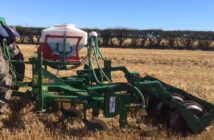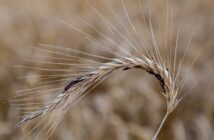The Food and Agriculture Organization (FAO) of the United Nations (UN) have estimated that around 20-40% of global crop production is lost through pest and disease outbreaks each year, costing the global economy over $220 billion annually. Coupled with increasing occurrences of fungicide/insecticide resistance, as well as the environmental impacts of these products, there is a greater emphasis on identifying more sustainable techniques that tackle these growing issues without sacrificing yield.
As a result of this, many working within the crop health and protection sector are turning their attention to breeding and whether crop traits can be optimised to resist the onset of major crop diseases.
Achieving durable disease resistance in cereals is an authoritative volume detailing the latest research on how to tackle these challenges and is the latest book from award-winning Burleigh Dodds Science Publishing as part of their Agricultural Science series which focuses on sustainable practices. It brings together over 65 experts in cereal diseases under one roof and from the four corners of the globe.
Edited by world-renowned plant pathologist, Professor Richard Oliver, formerly of Curtin University, Australia, this new title:
- Provides an authoritative review of the key developments in achieving durable disease resistance in cereal crops.
- Comprehensive coverage of the major diseases that affect cereal crops (Fusarium head blight, Septoria tritici blotch, tan spot).
- Assesses the key challenges in breeding durable disease-resistant cereals faced globally, with dedicated chapters to the regional strategies established by North America, North-west Europe, North Africa and West Asia.
“Diseases remain a significant threat to all crops grown worldwide. However, with many cereals recognised as staple food crops for millions (mainly in part due to their nutritional value) achieving durable disease resistance in cereals is a fundamental step towards ensuring global food security through the elimination of disease risk,” says Francis Dodds of Burleigh Dodds Science.
The book offers an authoritative review of the key advances in achieving durable disease resistance, from better understanding of pathogen biology/epidemiology and plant-pathogen interactions, to identifying sources of resistance and advances in techniques for breeding new varieties.




